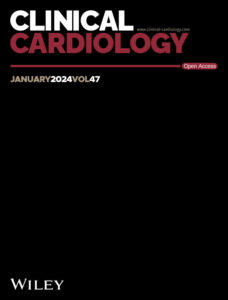Contractility, ventriculoarterial coupling, and stroke work after acute myocardial infarction using CMR-derived pressure-volume loop data

Background: Noninvasive left ventricular (LV) pressure-volume (PV) loops derived by cardiac magnetic resonance (CMR) have recently been shown to enable characterization of cardiac hemodynamics. Thus, such PV loops could potentially provide additional diagnostic information such as contractility, arterial elastance (Ea) and stroke work (SW) currently not available in clinical routine. This study sought to investigate to what extent PV-loop variables derived with a novel noninvasive method can provide incremental physiological information over cardiac dimensions and blood pressure in patients with acute myocardial infarction (MI). Methods:
A total of 100 patients with acute MI and 75 controls were included in the study. All patients underwent CMR 2−6 days after MI including assessment of myocardium at risk (MaR) and infarct size (IS). Noninvasive PV loops were generated from CMR derived LV volumes and brachial blood pressure measurements. The following variables were quantified: Maximal elastance (Emax) reflecting contractility, Ea, ventriculoarterial coupling (Ea/Emax), SW, potential energy, external power, energy per ejected volume, and efficiency. Results:
All PV-loop variables were significantly different in MI patients compared to healthy volunteers, including contractility (Emax: 1.34 ± 0.48 versus 1.50 ± 0.41 mmHg/mL, p = .024), ventriculoarterial coupling (Ea/Emax: 1.27 ± 0.61 versus 0.73 ± 0.17, p = < .001) and SW (0.96 ± 0.32 versus 1.38 ± 0.32 J, p = .001). These variables correlated to both MaR and IS (Emax: r2 = 0.25 and r2 = 0.29; Ea/Emax: r2 = 0.36 and r2 = 0.41; SW: r2 = 0.21 and r2 = 0.25). Conclusions : Noninvasive PV-loops provide physiological information beyond conventional diagnostic variables, such as ejection fraction, early after MI, including measures of contractility, ventriculoarterial coupling, and SW.
David Nordlund, Theodor Lav, Robert Jablonowski, Ardavan Khoshnood, Ulf Ekelund, Dan Atar, David Erlinge, Henrik Engblom, Håkan Arheden
2024
Clinical Cardiology, 47(1):e24216
